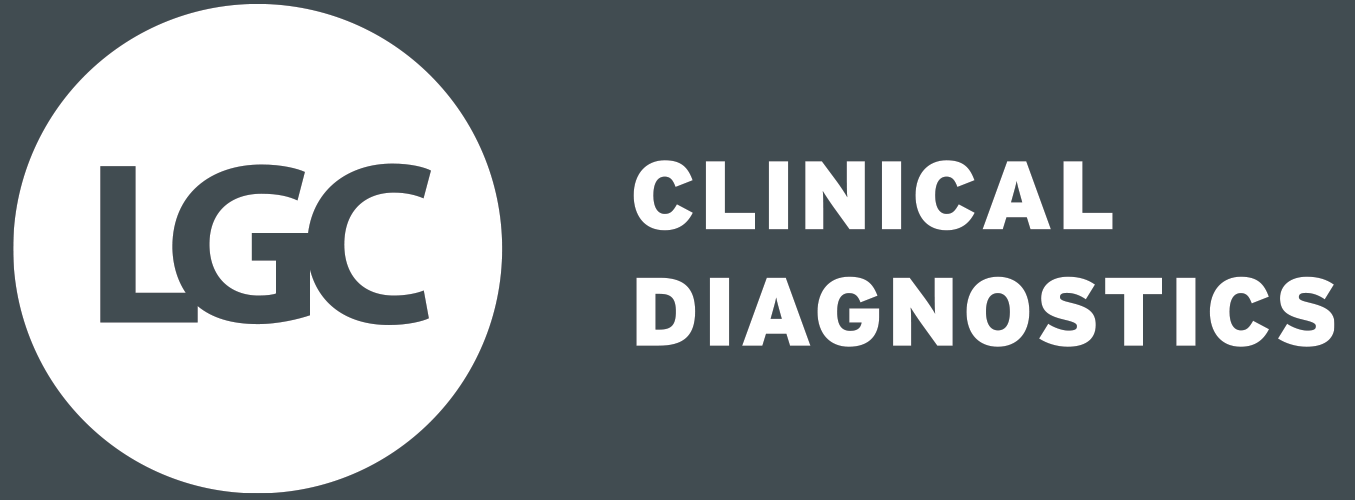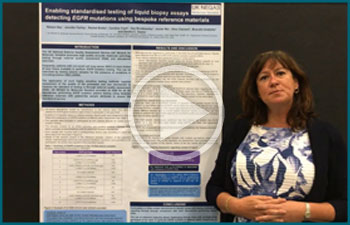Resources: Videos
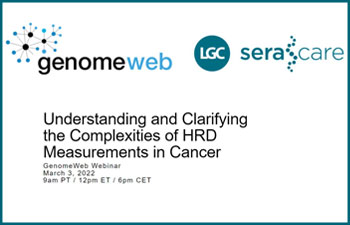
NGS
Webinar: Understanding and Clarifying the Complexities of HRD Measurement in Cancer
One key challenge with HRD as a biomarker for oncology therapeutics is that there is no standardized method to define, measure, and report HRD status using diagnostics in the clinical setting. Listen to the esteem panel as they try to further understand this issue and potential solutions and many more.
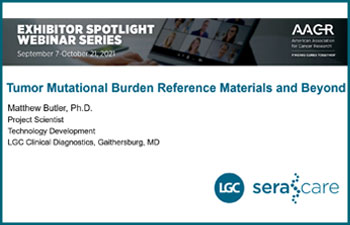
TMB
Tumor Mutation Burden and Beyond: AACR Spotlight Webinars
This 15 minute webinar, delivered by Dr. Matthew Butler as part of AACR Exhibitor Spotlight Series, highlights the work to make and continue develop reference materials for tumor mutational burden biomarker.

NIPT
Webinar: Laboratory Adoption and Clinical Considerations for Prenatal Cell-Free DNA Screening for Common Aneuploidies
Cell-free (cf)DNA screening of pregnancies (also known as non-invasive prenatal testing or NIPT) is a transformative technology that is becoming routine for all pregnancies. Laboratories are potentially faced with adding a new technological approach in order to add NIPT to their repertoire of assay. Listen to the panelists discuss their recent experiences of adopting NIPT for routine use and how they continue to execute complex validation studies and interpret unexpected results.
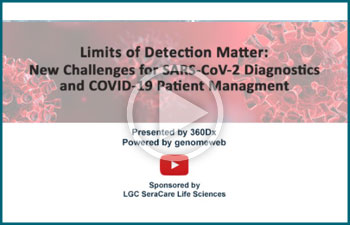
COVID
Webinar: Limits of Detection Matter: New Challenges for SARS-CoV-2 Diagnostics and COVID-19 Patient Management
This webinar presented by 360Dx discusses establishing quantitative SARS-CoV-2 viral load testing, the clinical relevance of limits of detection and viral load, the need for universal standards to compare SARS-CoV-2 detection methods, and technologies used to advance reference materials for assay standardization.
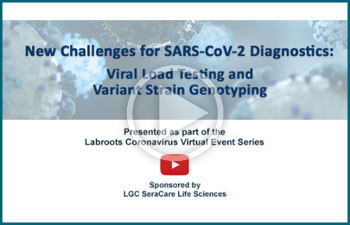
COVID
Webinar: New Challenges for SARS-CoV-2 Diagnostics: Viral Load Testing and Variant Strain Genotyping
This webinar, presented as a part of the Labroots Coronavirus Virtual Event Series, discusses two critically important issues clinical labs are facing today: 1) SARS-CoV-2 viral load testing and the clinical correlates and 2) early detection of new strains that are more infectious or more pathogenic using genotyping assays.
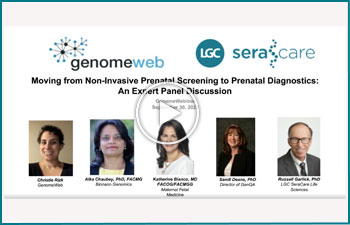
NIPT
Moving from Non-Invasive Prenatal Screening to Prenatal Diagnostics
Non-invasive prenatal testing (NIPT) continues to expand globally to support maternal-fetal patient care. With a growing number of available assays and more labs offering testing, it is essential to have consistency in reporting and the ability to compare results and validate current or new methods.
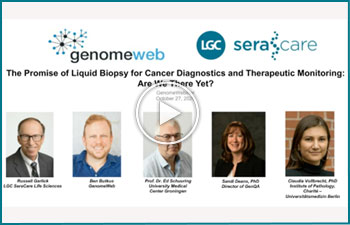
ctDNA
The Promise of Liquid Biopsy Application to Cancer Disease Diagnostics and Therapeutic Monitoring – Are we there yet?”
Circulating cell free DNA as a surrogate sample type for effective diagnostics has remained an area of significant interest.
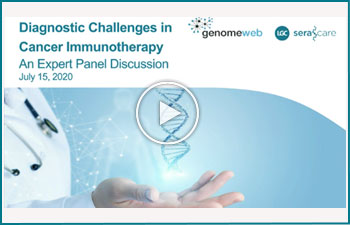
NGS
Webinar: Diagnostic Challenges in Cancer Immunotherapy Webinar
Webinar: Cancer immunotherapy is an exciting new advance for the successful treatment of many forms of metastatic cancer. However, only a minority of patients with terminal cancer have durable response with approved immuno-oncology treatments.
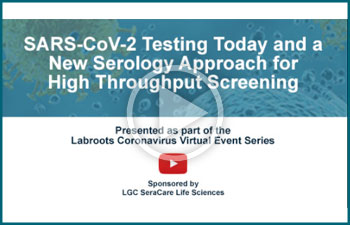
COVID
Webinar: SARS-CoV-2 Testing Today and a New Serology Approach for High Throughput Screening
Presented as a part of the Labroots Coronavirus Virtual Event Series, this three part webinar discusses the ongoing challenges clinical laboratories are facing today with respect to viral SARS-CoV-2 RNA testing and introduces a new serology approach to impact the future of high throughput population screening.

COVID
Webinar: How To Establish COVID-19 Diagnostics and Keep Up With Demand
In this presentation and panel Q&A, leading Clinical Laboratory Directors share their practical experiences and challenges faced when developing, validating and going live with a SARS-CoV-2 assay in routine diagnostics as well as address the challenges of ramping up testing to meet demand while maintaining quality standards.
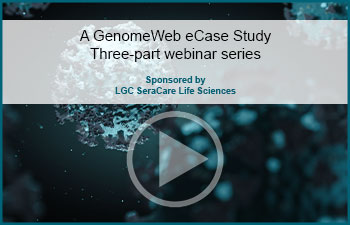
COVID
GenomeWeb eCase Study Webinar Series
This three part GenomeWeb eCase study series, addresses SARS-CoV-2 quality solutions, verification panels and reference materials.
Webinar: Experience with SARS-CoV-2 (COVID-19) Assay Validation
Webinar: Rapid Implementation of SARS-CoV-2 Testing
Webinar: Expert Advice Establishing a SARS-CoV-2 Assay for COVID-19
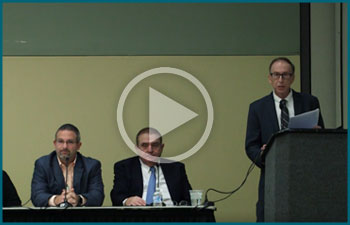
NGS QC
Designing Next-Generation Sequencing Controls and Standards for Optimal Quality and Performance
Workshop Video: Listen in as Chief Scientific Officer, Russell Garlick and our esteemed panel from the AMP 2019 workshop as they tackle the technical and regulatory considerations for designing next-generation sequencing controls and standards for optimal quality and performance.
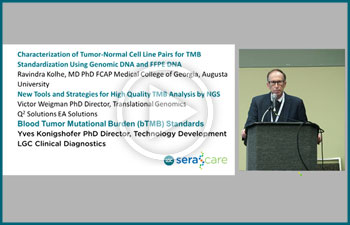
TMB
New Tools and Strategies for High Quality TMB Analysis by NGS
Workshop Video: Three scientific experts present tools and strategies for TMB analysis through the characterization of tumor-normal cell line pairs for TMB standardization using genomic DNA and FFPE DNA,Q2 solutions EA solutions, and blood tumor mutational burden (bTMB) standards
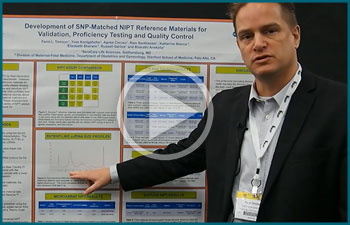
NIPT
Development of SNP Matched NIPT Reference Materials for Validation, Proficiency Testing and Quality Control
Plasma-based non-invasive prenatal testing (NIPT) by Next Generation Sequencing (NGS) is being adopted into clinical laboratories. However, obtaining sufficient amounts of patient-derived reference materials for proficiency testing, assay validations, and daily QC remains difficult if not impossible to obtain. Using consistent, high quality and patient-derived reference materials can help with all of these tasks.
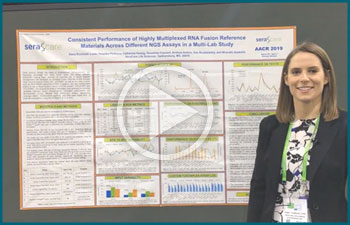
RNA Fusion
Consistent Performance of Highly Multiplexed RNA Fusion Reference Materials Across Different NGS Assays in a Multi-Lab Study
Fusion detection is an important part of cancer disease management, and there is an increasing need for highly multiplexed reference materials to cover mutations which may be rare or difficult to obtain.
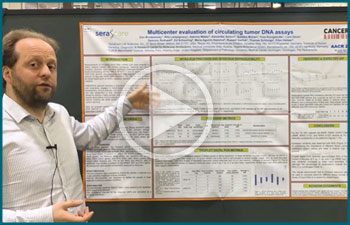
ctDNA
Multi-Center Evaluation of Circulating Tumor DNA Assays
Measurements of circulating tumor DNA (ctDNA) hold great potential to detect residual disease and monitor therapeutic response and tumor evolution. However, there are many technical challenges including trace levels of circulating cell free DNA, short DNA fragment sizes, low variant allelic fractions, and the need to detect all variant types.
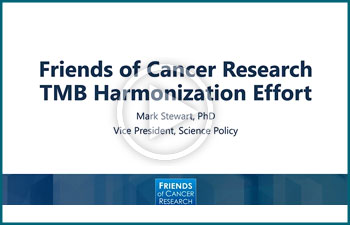
TMB
Optimizing TMB Use in Cancer Research and Care: The Friends of Cancer Research TMB Harmonization Effort
Harmonization of methods to quantify TMB will facilitate robust biomarker development and optimize clinical utilization and treatment decision-making. Friends aims to better understand the impact of assay variation on clinical outcomes, align standards, and define best practices for TMB assessment.

TMB
Target the Tumor Mutational Burden and Pursue Harmonization
Friends aims to better understand the impact of assay variation on clinical outcomes, align standards, and define best practices for TMB assessment. Listen as Dr. Mark Stewart discusses the role of the tumor mutational burden (TMB) in cancer research and the need for harmonization throughout the process.
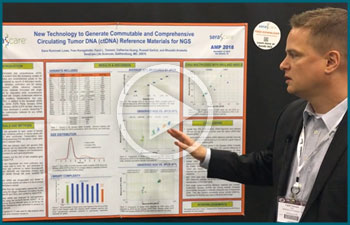
ctDNA
New Technology to Generate Commutable and Comprehensive ctDNA Reference Materials for NGS
The need for commutable and comprehensive ctDNA reference materials is evident from the increasing number of liquid biopsy diagnostics and comprehensive panels on the market that are accompanied by reports of discordant results.
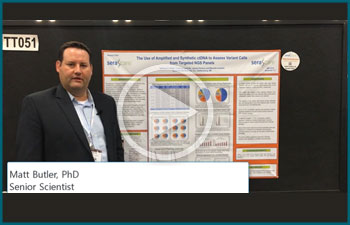
ctDNA
Use of Amplified and Synthetic ctDNA to Assess Variant Calls from Targeted NGS Panels
The detection of somatic mutations in circulating cell-free DNA(ccfDNA) from plasma samples using next-generation sequencing (NGS) panels is one of the most exciting developments in oncology diagnostics. However...
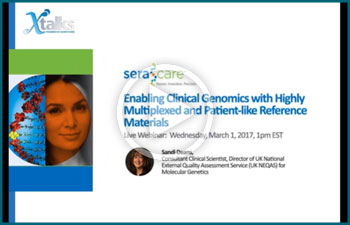
Case Study
Enabling Clinical Genomics with Highly Multiplexed and Patient-Like Reference Materials
Industry expert Dr. Sandi Deans, Consultant Clinical Scientist and Director of UK National External Quality Assessment Service (UK NEQAS) for Molecular Genetics presents a case study of how a global external quality assessment (EQA) organization uses expert-designed, patient-like reference materials to ensure the accuracy and consistency of a clinical genomics application.

Validation
Validate Your Clinical Genomics Assay Without Crushing Your Budget or Sanity
In this video, Drs. Greg Tsongalis and Russell Garlick will review how to employ modern NGS QC tools to accelerate the development of your clinical genomics assay for less than it costs with traditional materials and methods.
